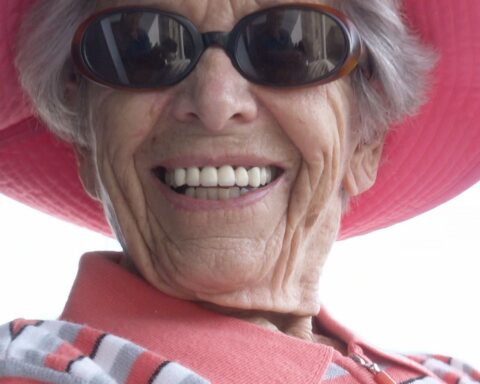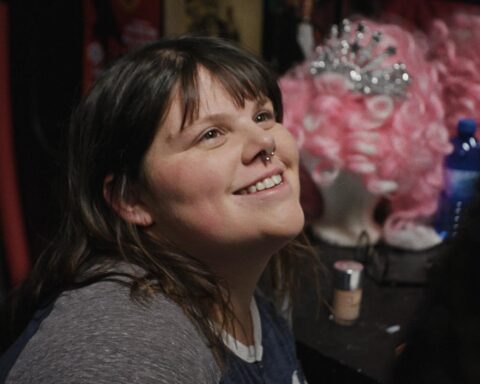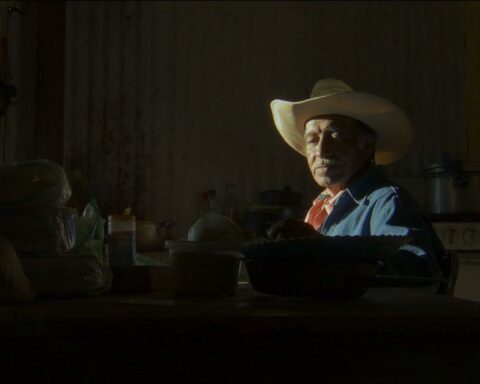A man looks over his shoulder in Soweto, South Africa, and nimbly reconnects the wires of a household whose electricity bill skyrocketed so high they couldn’t afford the newly privatized utility. A woman in Afghanistan counsels another younger woman on how to escape the abusive relationship with her husband, while simultaneously running for the country’s parliament. An African-American community in Highland Park, USA, fights for control of the local water plant as they watch their houses foreclosed. An eccentric American entrepreneur sits in a restaurant in China and explains that the links between earthworm excrement and good tea are not to be underestimated.
Connective threads of human existence encircle this globe but rarely do they intersect at one place and time. Quebec’s premiere documentary film festival, Rencontres internationales du documentaire de Montréal (RIDM) provides that opportunity. It is true that this is the festival with the most tongue-twisting name, but like the documentaries showcased at this year’s 10th anniversary, RIDM is a complex cultural creature.
The festival was created by filmmakers Jean- Daniel Lafond, Yvan Patry and other media colleagues who were eager to share their world of documentary cinema with regular non-filmmaking mortals such as myself. From its inception, it has been an event interested in all the facets of non- fiction film and filmmaking, from the sordid underbelly of how documentaries get made to the grand illusory process of how they get seen. Along the way, the one element that has made RIDM float to the top in the crowded sea of film festivals is the emphasis placed on audience and artist engagement and interaction.
RIDM’s Programming Coordinator Charlotte Selb has been with the festival for five years and firmly reinforces this guiding philosophy: “The main point is that it’s called the Rencontres — we do a lot of interaction with the audience.
Discussion is integral, whether it is in screening debates, master classes, or at the market interactions.” This privileging of encounters between filmmakers and their audience over a mawkish preference to showcasing celebrity culture is what gives RIDM the lasting integrity of a dynamic and diverse forum for experiencing the cultural kaleidoscope that is the world of documentary cinema.
That’s not to say there won’t be some serious shine to this year’s celebration. To mark the audacious feat of surviving this many years on a shoestring budget while offering a mélange of cinema so diverse it would make Werner Herzog blush, RIDM’s organizers have brought in some compelling extras. As a tribute to the founding members of the festival, the first day will be an open-house, with free screenings and a special exhibition with ten life-size photographs of (in)famous Quebec documentary filmmakers. Shot in locales chosen by the doc-makers, these photos will reflect the concepts that each filmmaker feels are important in their lives and works. The exhibit exemplifies the collaborative synergy that RIDM nurtures. Inspired conversations between artist and audience, analogue and digital, photo still and moving image, and reality and representation will undoubtedly manifest itself in this installation as it signifies the tone for the festival.
Documentary cinema has a way of providing building materials for cultural bridges, and language diversity in a city like Montreal is a major consideration in how the festival is constructed. André Pâquet knows this well, and as RIDM’s Head of Programming, he is always on the look-out for films subtitled in English and French. “But,” he earnestly points out, “Rencontres is the only place in North America where there is a market for Francophone documentaries.” This is a substantial qualifier for the festival, as RIDM is the premiere showcase for Francophone films from Quebec and a conduit for the steady stream of talent pouring out of France and the French-speaking countries of Africa and the Caribbean. Accordingly, Pâquet’s programme includes a focus on Quebec cinema, but also offers an impressive selection of outstanding Anglo films.
It is no great mystery that film festivals show oodles of rare gem films in tiny windows of time, making everyone with a busy life hold their hands to the heavens and rage: “But why?” as they rearrange their calendars and thumb through thick programmes to pick flicks to see. Not to be outdone numerically, RIDM’s digits for 2007 are impressive: 550 submissions, 200 acquisitions, 80 slated for official competition, and 40 English Canadian docs. As well, it makes sense the festival is organizing a special focus on la belle province—Quebec submissions have weighed in with an impressive 120 titles, the majority of which will be premiere screenings.
From the heap of documentary films that has befallen the intrepid RIDM volunteers and staff, over 100 titles will be presented to the public between November 8th and 18th, which begs the question: is there a method to the madness of selection? “We’re trying to make it our mark to have auteur, or Point of View (POV), documentaries,” says Selb. There is also an emphasis on socio- political docs and the organizers have crafted two competitive categories to celebrate such filmmaking. The first is caméra au poing (camera at the ready), which groups films that emphasize politics and are of an international scope. The second category is éco caméra, which as the name implies, showcases films that interrogate environmental stories, spaces and issues.
There are also two special programmes to mark the festival’s decade: a tribute to ISKRA, a documentary production and distribution company founded by Chris Marker and known for its focus on the history and tradition of resistance cinema and a special selection of films from South America’s cinematically underrepresented Colombia.
So where does the future lie for RIDM after 10 years? Are people really craving escape from the digital private world and yearning for shared experience, such as we see in the booming music concert industry? Will audiences—and business— grow for niche film festivals like the Rencontres? Pâquet and Selb suddenly sit upright when asked these questions. Awakened from their overworked state of tranquility, they spell it out for me: like the aging cultural gatekeepers at the CBC as well as many independent distributors, the duo is riddled with techno-anxiety. Selb: “Costs are getting higher even for festivals. From the sellers and distributors, they are all demanding more money. The Internet is the new way to distribute and sell, and it’s difficult to see a doc in a theatre. Even when docs in the USA get theatre time, they quickly go to DVD sales.” Paquet: “And docs are being produced like never before, more and more all the time…docs are becoming very fashionable, greater in demand…a lot of people will go on the Net first to build their audience, because that’s where they are.”
But these do not sound like problems as much as they appear to be challenges in the fluid contact zone between commerce, culture, audience privilege and taste. To wit: After I programmed a film for a campus-based festival and screened it last year, I ran into a friend and asked why he wasn’t at the screening. “Oh, I downloaded it a couple weeks earlier,” he sheepishly replied. Wow, I thought to myself, the film had barely been doled out to festivals and reviewers and people were already downloading it! Initially incensed at this cultural injustice, I had to wrestle with the equally startling and seemingly contradictory revelation that we did have over 500 people attend that particular screening. Such is the complexity of culture, commerce and community in the digital era. Thankfully, RIDM is part of the equation, and odds are they’re in for another ten more doc-filled years.
Selected Film Reviews from RIDM’s programme:
All In This Tea
dir. Les Blank and Gina Leibrecht, USA, 2007
Les Blank follows a determined American businessman to China, in search of good tea and ultimately, a better world. It’s a good thing this charming film comes from the talented handling of a documentary icon and focuses on a very intriguing subject, or it could be dismissed as part of the “white privileged man goes on self-affirming journey to Global South to teach, learn, share and grow” category. The film follows American David Lee Hoffman into China’s beautiful tea-producing regions, where we see him skillfully negotiate business deals and conduct an understated crusade for the rights of Chinese farmers. A sincere champion of organically grown produce, Hoffman finds the most delicious and delicate teas nestled in the diverse organic farms deep in the folds of China’s countryside. His efforts are commendable, but some of the cultural implications nag, such as: Why, after 15 years of dealing in tea with Chinese farmers, merchants and managers, is Hoffman still speaking exclusively in English? Perhaps this is a courtesy for the filmmakers, but for the viewers it remains enigmatic. Still, this is a gentle, drifting film that at least prods at some cultural and political parts of the globally intricate practice of tea-making, buying and selling.
Keiskamma: A Story of Love
dir. Miki Redelinghuys, South Africa, 2007
This potent vérité does not hide from love as it follows activists and patients ina South African district riddled with the HIV / AIDS virus. Meandering throughout a community forged by the challenges of sickness and poverty, the film catches the collective spirit that comes with intense commitment to mutual aid. Heart- breaking stories slowly emerge such as the tale of Nkululeko, a young boy infected with HIV and covered in sores, who is remiss in his self-disciplined routine of taking pills every day. Keiskamma is a lyric portrait of a group of incredible individuals who are building up spirit from bodies taken away. Remarkably reflexive, the film also supplies much-needed moments of humour and cultural critique. African women are filmed literally and figuratively weaving the tapestry of their story, while their words are translated into English subtitles on the screen: “More photos of us we will never see…”
The Big Sellout
[A longer version of this review was originally published on www.artthreat.net]
dir. Florian Opitz, Germany, 2006
This German documentary is a deeply emotional, powerful and disturbing examination of the effects of neoliberal policy on the global south. The film interrogates spaces in the poorer parts of the planet and uncovers disasters and tragedies that have been caused by a preventable disease: economic imperialism. By now, most know that the World Bank, WTO (World Trade Organization) and IMF (International Monetary Fund) are imposing profit- hungry policies on poor countries so that the North can continue along with its privileged consumptive culture. This film goes a step further, and instead of focusing on the talking heads of academics, policy wonks and CEOs, delivers real stories from those on the ground toiling under the oppressive economic thumb of these institutions.
In The Big Sellout, we meet four central characters, beginning with Simon, a British train driver, who clearly articulates the consequences of the systematic dismantling of what was once Europe’s best public transportation system. Next there’s Miranda, an impoverished Philippine mother whose deathly ill 16-year-old son is being ignored by Manila’s privatized healthcare system. We follow her one day as she has to choose between buying one pound of rice to feed her children and grand- children or get her son his daily medicine. We then meet Rosa and Oscar in Cochabamba, Bolivia, who are part of the successful fight to stop Bechtel’s takeover of their public water resources. Finally, there’s Bongani, who along with other activists in the Soweto Electricity Crisis Committee, have been busy since South Africa’s electric provider was privatized. When ESKOM (the private utility company) workers go to poor neighbourhoods and cut families’ wires who cannot afford to pay the escalating bills, Bongani and crew follow, reconnecting up the wires in “Operation Kanyesa,” a Zulu word for “lights on.”
This doc brings us down from the lofty debates to the ground, where real work is being done, where policy is being rejected, and where resistance is a diaspora of passionate citizens the world over.
4 Elements
dir. Jiska Rickels, Netherlands/Argentina, 2006
This gorgeously constructed feature doc dramatically presents men at work. The division into four compartments—Fire, Water, Earth, Air—linked by the human
pride and tragedy of labour, along with the minimalist narration and musical score, make this Dutch film a contender for the new Austrian school of documentary cinema. The first chapter is the most intriguing, featuring scenes of Soviet firefighters stoically moving through barren Baltic forests digging ditches, dampening flames and washing off soot; they are, to say the least, mesmerizing and hypnotic. The brooding understatement of the first chapter sets the tone for the other elements, which are depicted as fishermen in Alaska (Water), miners in Germany (Earth), and astronauts in Russia and Kazakhstan (Air). Unfortunately, 4 Elements reveals a chauvinistic trend with this doc subject, and does not document two sexes. Instead of showing audiences the relationship between man and air as realized in the science of astronautics, wouldn’t a more compelling and representative conclusion investigate the global, female-dominated industry of airline labour?
It’s Always Late For Freedom
dir. Mehrdad Oskouei, Iran / Iraq, 2006
From Iran comes a gem of a film. This one-hour doc, set in the interior of a correctional facility for delinquent boys, offers pensive and emotional portraits of young people who have veered into destructive paths. Their crimes range from stabbing to possession of crack to forging passports, but they all share a similar persona of jaggedness mixed with vulnerability. In interviews, the boys discuss their crimes and wishes for the future. Their vulnerability is never seized on by the camera or interviewer. Instead they are left quietly sitting in beams of sunlight on bunk beds, staring out windows, while stringing glass beads for loved ones. The windows in this gorgeously constructed piece connect exterior to interior, at times seeming to offer false freedom, while also bridging the dark to light. The boys are not hardened criminals, and often weep deeply when they watch family members leave or imprisoned friends depart after being granted their freedom. This film is about being left behind. The boys embody tales of hardship, love, family and discovery. All feel the loss of those very things as they sit on the inside and support each other while the world outside continues without them. In this way, the film is also a testament to community and compassion.











